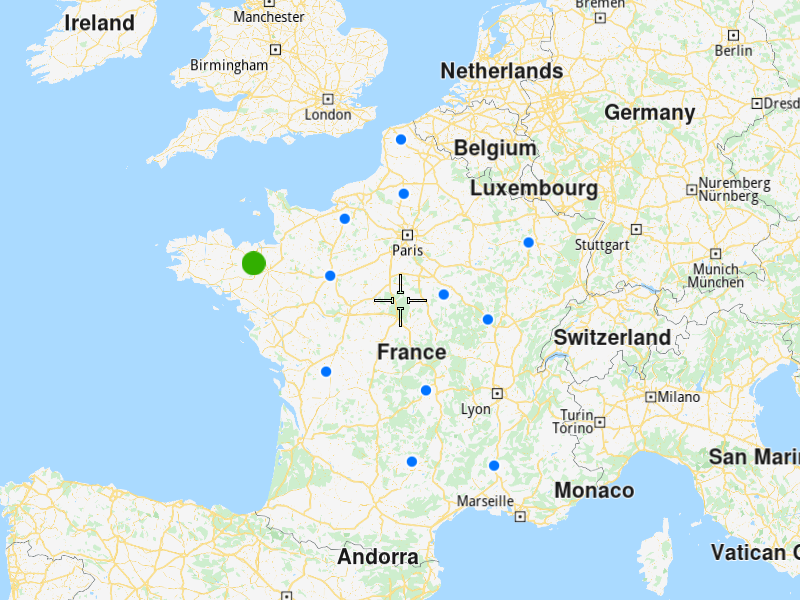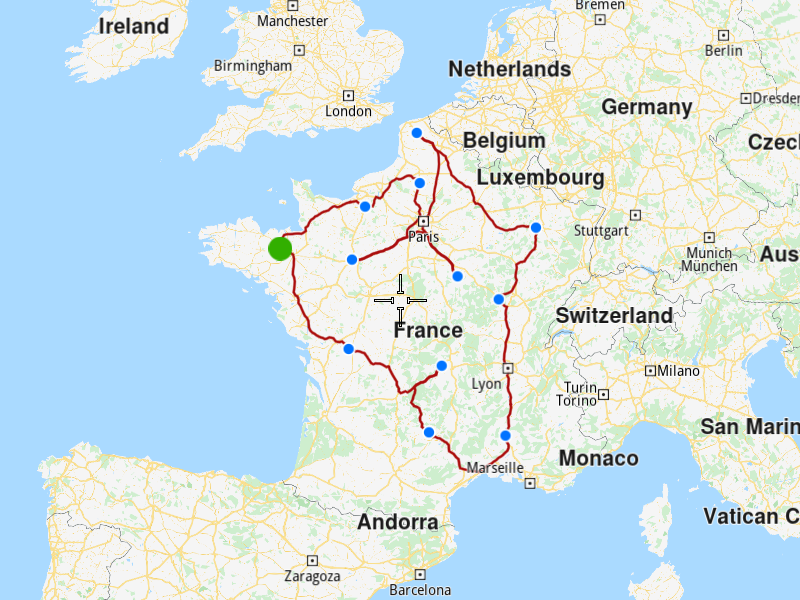Add optimization with set matrices¶
Add an optimization with custom matrices and display the solution on the map.


Use case¶
Create an optimization where the time and distance matrice values are set by the user.
How to use the sample¶
First, get an API key token, see the Getting Started guide.
Download the Maps & Navigation SDK for C++ archive file for Linux or WindowsWhen you run the sample, an optimization will be saved, the solution will be returned and showed on map.
How it works¶
Create a
vrp::StopListand add the stops to it.Create a
vrp::ConfigurationParametersand set the distnace unit, the matrices build type toMBT_Setand the matrices to it.Create a
vrp::Optimizationand set the objects created at 1.) and 2.) to it.Create a
ProgressListener,vrp::Serviceandvrp::RouteList, in which the solution will be returned.Call the
addOptimization()method fromvrp::Serviceusing the list from 4.), the`vrp::Optimizationfrom 3.) and the progress listener.Once the operation completes, the list from 4.) will contain the solution of the optimization.
To display the locations and territories on the map¶
Create a
MapServiceListener,OpenGLContextandMapView.Create a
LandmarkList,CoordinatesListandPolygonGeographicArea.Instruct the
MapViewto highlight theLandmarkListfrom 2.) to print the stops.Instruct the
MapViewto center on thePolygonGeographicArea.Create a
MarkerCollectionof typePolylineand add the route’s shape to it.Set the newly created
MarkerCollectionin the markers collections of the map view preferences.Allow the application to run until the map view is fully loaded.

